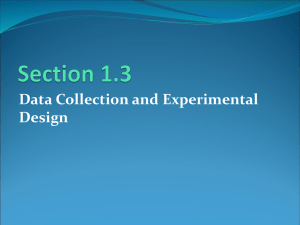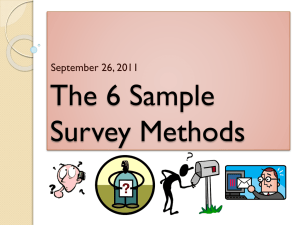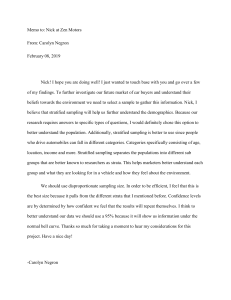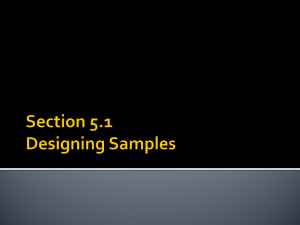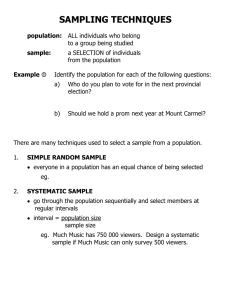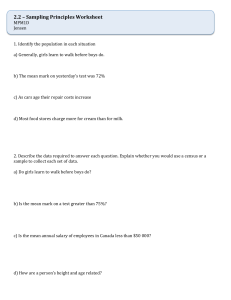Population Random Selection Sample
advertisement
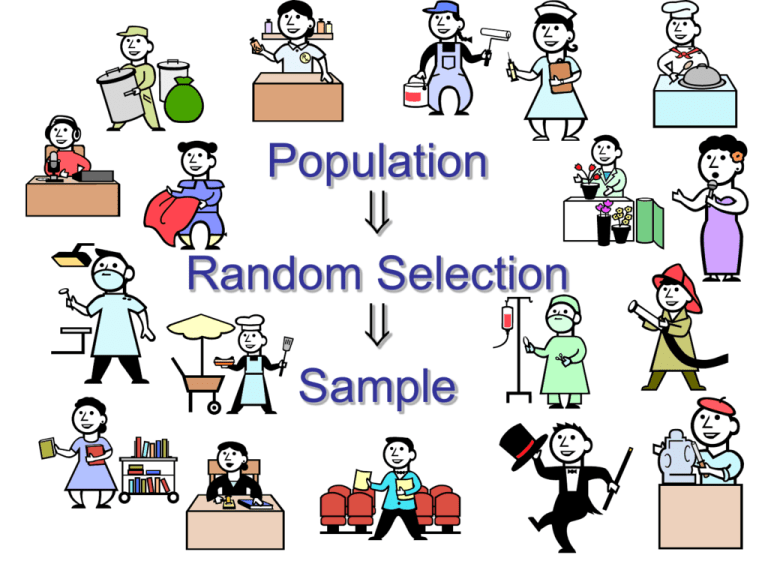
Population Random Selection Sample Sampling Vocabulary • Population of Interest the set of people or things you wish to know something about • Sample those selected randomly to represent your population of interest • Random sampling reduces bias when selecting those from your population of interest Sampling Methods Simple Random Sample (SRS) Voluntary Stratified Random Response Sample Sampling Convenience Systematic Sampling Sample Judgment Sample “Quickie Polls” Simple Random Sampling From the entire population every unit has the same chance of belonging to the sample and every possible grouping of specified size has same chance of being selected. Using a Random Number Table to get an SRS • 19223 95034 05756 28713 96409 12531 42544 82853 73676 47150 • Assign a number label to each unit in the population • Read numbers from table from left to right, starting anywhere. The subjects selected for the sample are those read from the table. • Repeats or those not a part of the list are ignored. Stratified Sample 1st divide population into groups (strata), then take a Simple Random Sample from each strata Systematic Sample From a list of the population, randomly choose a starting subject, and then take every nth subject (for example, start at the 4th person and sample every 10th person after, so #4,14, 24, 34, etc.) Biased Samples • Voluntary Response Sample--radio station call-in or magazine/internet write in • Convenience Sample--surveying folks in a mall who appear willing to talk to you • Judgment Sample – surveying those you pick as an “expert” selector • “Quickie Polls”--hastily designed, poorly pretested, one night survey sample for evening news show
